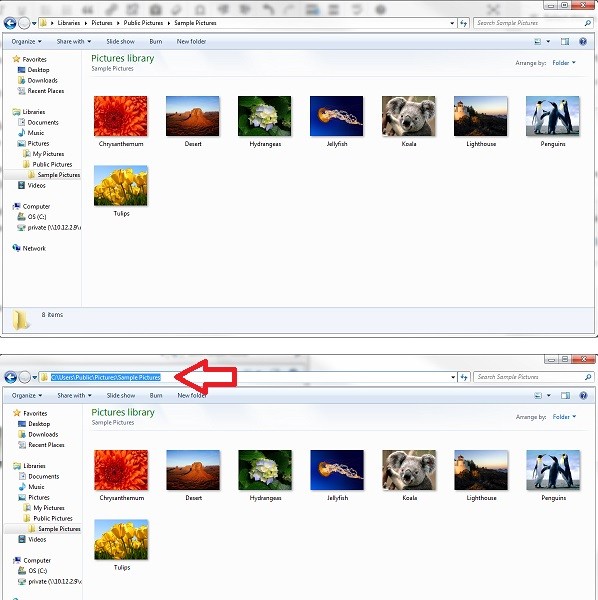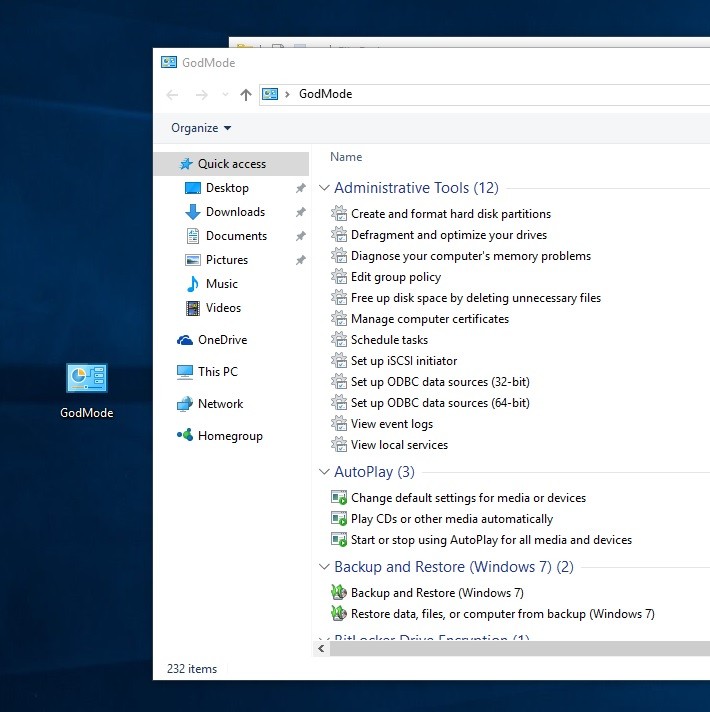If you have photographs, videos, documents and PDFs saved to your computer, and who doesn't, you're using folders to organize them. Just like their real-world counterparts, folders are useful to keep your information organized.
Unfortunately, as you get more files and more folders, in no time you go from feeling organized with Windows folders to feeling overwhelmed by them. To avoid getting buried in an avalanche of folders, check out these handy tips to use Windows folders more effectively.
1. Use folder shortcuts
If you find yourself opening the same folders all the time, create desktop shortcuts for them. Simply hover your cursor over the folder you want to easily access, right-click and choose Create Shortcut. Drag the new shortcut over to your desktop and you're done.If you're a Windows user who's big on keyboard shortcuts, you can use those to open folders as well. Find a folder on your desktop and right-click. Choose Properties and then go to the "Shortcut" tab. Click in the "Shortcut Key" field and press the Ctrl button. You'll see "Ctrl+Alt+" and you can add a key, like S. Then, you'll be able to access that folder by pressing Ctrl+Alt+S.
Here are a couple of other folder shortcuts. To rename a folder, click on the folder once, then tap the F2 key. To quickly copy the address bar of an open File Explorer window, press Alt+D to select the path. (See photo.)
2. Speed up your Downloads folder
If it seems to take a long time to open files from your Downloads folder, you're not imagining things. It is slow, especially if you have lots of folder types in there. Part of the reason is that the Downloads folder is optimized for picture files.Here are two tricks to speed things up:
- Create a lot of sub-folders. Organize everything in Downloads into as many folders and sub-folders as is manageable, like Vacation Receipts with sub-folders like Food, Hotel, and so on.
- Change your default setting from "Pictures" to "General Items." To start, open your Downloads folder. Right-click on a blank spot and choose Properties. Then go to the "Customize" tab. Click on the down arrow below "Optimize this folder for," and select General Items. Then click "Apply" and choose "OK."
3. Build your own libraries
Windows 7 introduced a type of folder called libraries. By default Windows created libraries for Documents, Music, Pictures and Videos. Opening these would show you the same information as the Documents, Music, Pictures and Videos user folders from past versions of Windows.However, the power of Libraries is that you can link multiple folders to a library folder. That lets you see the information from multiple folders around your hard drive, or on multiple hard drives, in one easy-to-find spot. You can also create new library folders for whatever types of files you want.
Windows 7 shows the Libraries by default in the left column of any folder, however, Windows 8 and 10 have them hidden. To see them in 8 and 10, open a folder and go to the View tab. Click "Navigation pane" and choose "Show libraries."
To edit an existing library, open any folder window. In the left column under "Libraries," right-click on a library and select Properties. You'll see what folders are included in the library.
You can click "Include a folder" to add more folders or remove existing folders. It also lets you select which folder is your "save location." When you save a file to the library folder, this save location is the actual folder the file ends up in.
When you're browsing around your computer, you can also right-click on a folder and select "Include in Library" and select a library to add the folder to. This is also where you can create a new library folder.
4. Hidden advanced options
If you're really good at organizing your Windows folders, you may want to try more advanced tricks that'll save you time. These are options that everyday organizers don't know about.Try this: From a folder in File Explorer, right-click on the folder and at the same time hold down the shift key. You'll see extra shortcuts, like Pin to Quick access, and possibly others, like Move to Dropbox or Open as Notebook in OneNote.
5. Troubleshoot with a GodMode folder
Have you heard of GodMode? It's a really useful function that Microsoft has openly kept a secret. GodMode is intended for computer pros who are asked a lot of questions about troubleshooting Windows 10 problems.GodMode puts almost everything that's scattered around Windows' Control Panel onto an easy-to-read menu. Talk about staying organized.
Instead of searching all over your computer for things like, "Auto-hide the taskbar," "Find and fix printing problems," and many other issues, GodMode lists them all out in a neat menu.
Then open the folder and you'll see the long list of settings you can change. Just be careful not to change settings unless you know what they do. Otherwise, you could cause problems down the line for your computer.


















